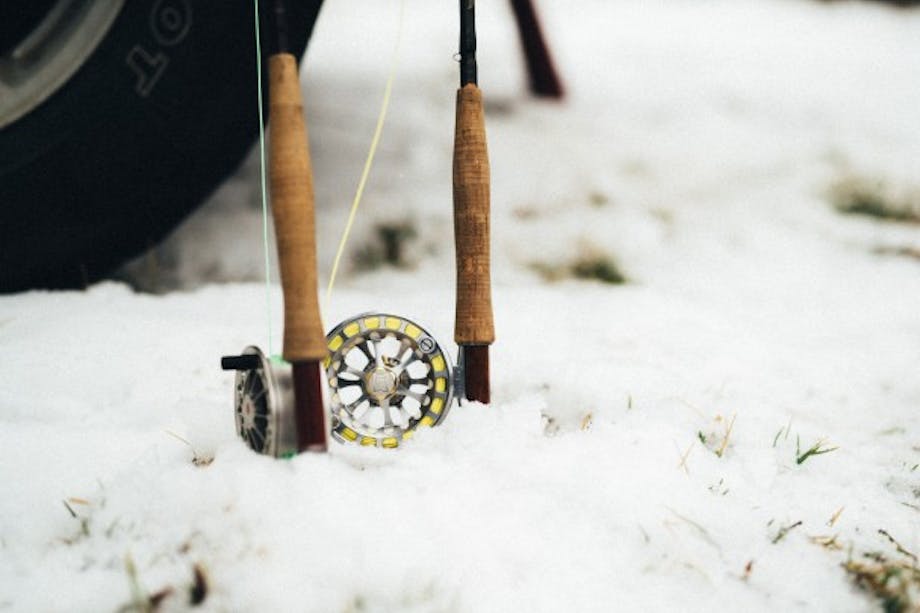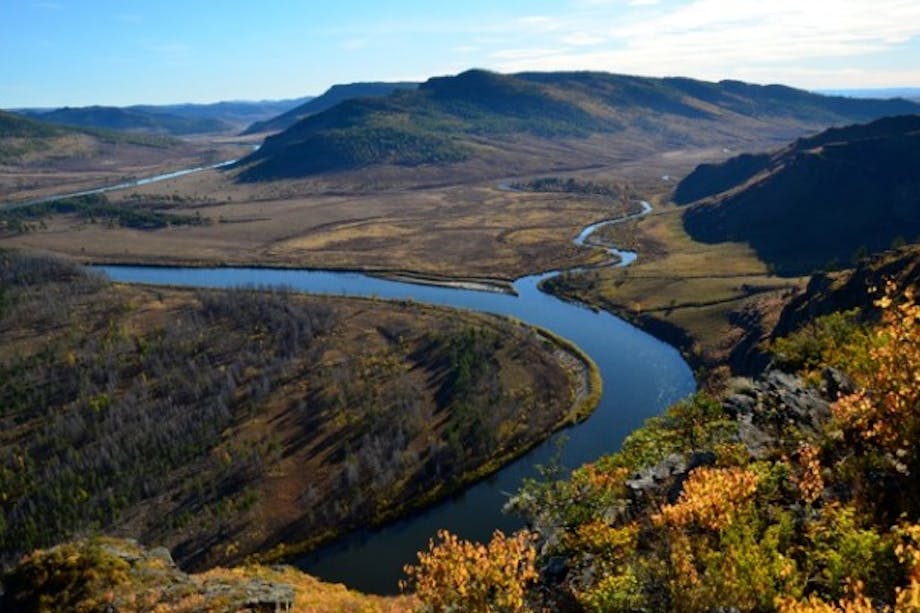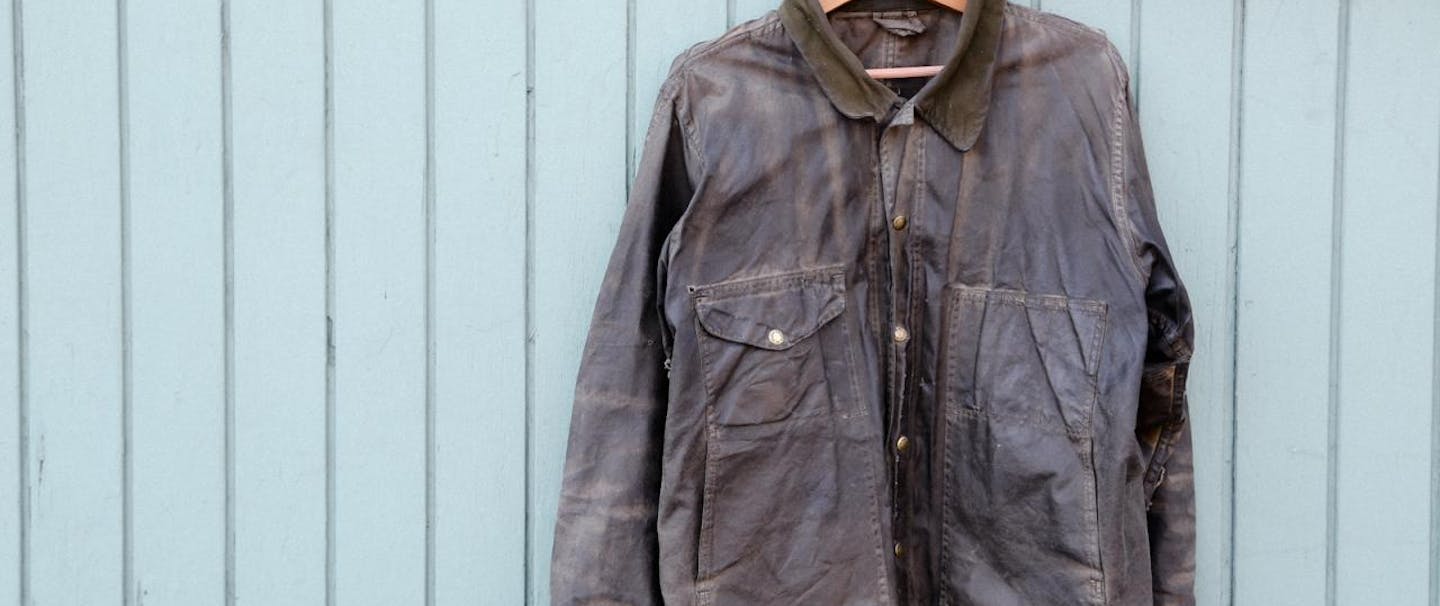 Words by David S. Lewis. Executive Editor, (614) Magazine.
Words by David S. Lewis. Executive Editor, (614) Magazine.
Photo by Judith O’Keefe
Mother’s Day marks the beginning of spring fly fishing for many. It takes a different breed (and a river out West) to brave the freezing waters of February, or the rapids of the snow melt in March and April.
Truth be told, I could have easily waited another couple weeks, but I’ve had my tomatoes growing since February, and I started my beans inside the house. I get antsy towards the end of winter.
My first trip was fraught with the usual frustrations: my leader was more snarled than a Rottweiler farm; my finely-honed cast of last year is now suddenly impotent.
Still seething on the way home (some delightful chap saw fit to take my clearly empty fly rod case out of the back of my pick-up), I had the hindsight to remember a few things that I wish I’d been only slightly more aware of while actually fishing.
1. Use a leader stretcher first, and often. That reel and line sat in your closet for months. Memory happens. Put on a new leader and strip the first 40’ of fly line (at least) and stretch it out. Do it twice; the difference in performance will be dramatic.
And stretch the leader after every fudged cast. You’re not going to be throwing them like you were last winter, certainly not at first. Every time you remove a wind knot, you should be using the leader stretcher, too. Stretching it after each (inevitable) tangle is wise because not only is the line going to cast more forgivingly, it’s also going to perform better in the water. The very experienced fisherman will have been working hard throughout the winter, honing his technique. The rest of us weren’t give yourself every advantage you can.
2. So you spent the winter fantasizing about that special hole, and when you roll in at noon, someone’s already there, fishing YOUR spot? Well, you’ve just got to go somewhere else. Your “hole” isn’t something you’re sharing with that dude, who by the way is rocking a spincast reel and a bucket of minnows, and is just assassinating fish in your hole left and right.
Them’s the breaks, kid. Fishing etiquette dictates that the early bird gets the worm. Plan to arrive at the hole you need to be there. Very rare is it that the time you need to be at the hole is the same time you want to be fishing. Don’t let spring fever make you a discourteous sportsman; the fish will know. They always know. Angler’s karma can be a savage force.
(On my first day out, I had been working a small island for hours when another angler stumbled down the hill and came out to the island, clearly having every intention of jamming himself into my peaceful Sunday afternoon. Unfortunately for him, my Catahoula, Roscoe, doesn’t take kindly to discourteous fishermen, either. Extend courtesy, but if you’ve got the hole, don’t give it up easily unless you’re hurting for company.)
3. Fish the water you have, not the water you want. Fishing in early spring means the water’s going to be cold, it’s probably going to be moving fast, and it’s not going to be as clear as it will when the slower waters of summer give streams a chance to settle down. Trout will be paying a lot of attention to sulfurs in the next couple weeks, and sulfur nymphs are going to be killing them until at least Father’s Day. As always, the vast bulk of the fish are biting sub-surface. Make sure your wallet includes lots of brightly colored flies, to catch their eyes in all that sediment.
I find brass and gold work better in sediment-filled spring streams, while silver is better suited for muddy lakes and ponds. And your “lucky” fly? If it doesn’t jive with the water conditions you are fishing, it’s not going to catch fish. You might be sentimental, but I promise you the fish aren’t Foolishly caught fish are young fish; that lucky fly might well bring in the 6-incher while that heavyweight cruised right by, looking the meal he knows he wants.
4. Keep your eyes open. Your leader is in worse shape than the tangled strings of Christmas lights in your attic. Your fingers, cold from surprisingly chilly spring weather, can barely grasp that 6X tippet material, let alone tie anything onto it. Your strike indicator won’t float. And, to add insult, the damn fish aren’t biting.
Set down the rod. Don’t even untangle the leader first, or you will be tempted to make another cast, and that’s not what you need.
Look at that pretty little creek, and try to figure out what you’re doing wrong with the rod out of your hand.
Spend a moment with your surroundings. What are the birds doing? If there are fifty swallows taking bugs of the surface of the water, you might try something dry; try to get it right at the edge of that shady area. Fish are more likely to strike at temperature shelves in the water, and the birds are using their eyes to find bugs; they’re probably leaving that half shady spot alone, which makes that fish even more likely to be there.
The first few outings can be frustrating, due to inclement conditions and out-of-practice anglers, but remember why you like fishing: the woods smell like spring rot, earthy and fertile, and the stream is just humming along. Paying attention to everything that’s happening around you won’t just help you relax: it’s going to help you fish.



